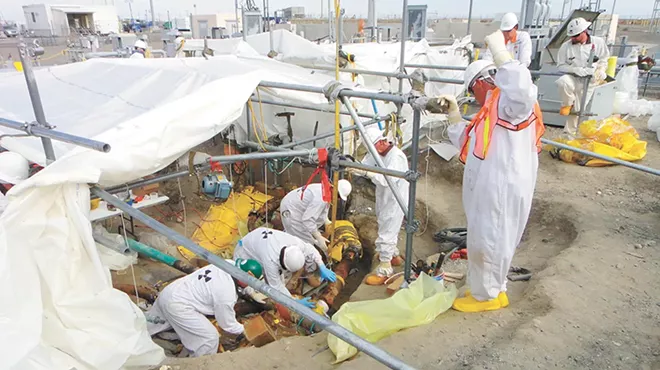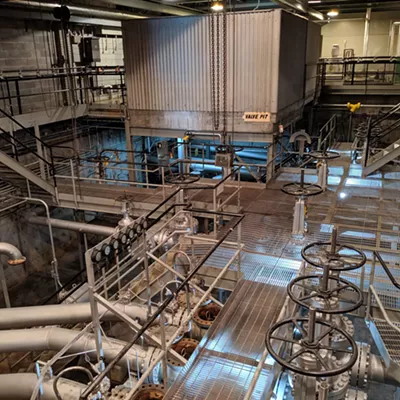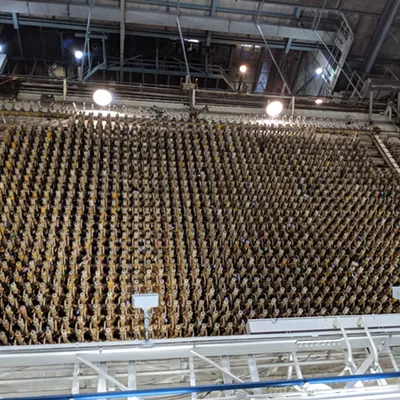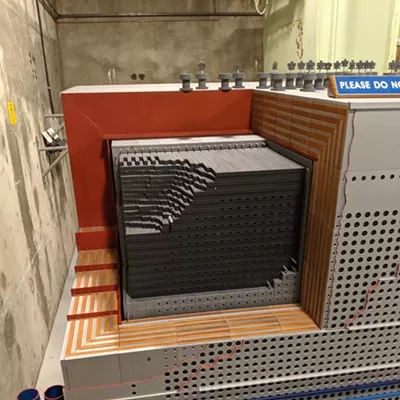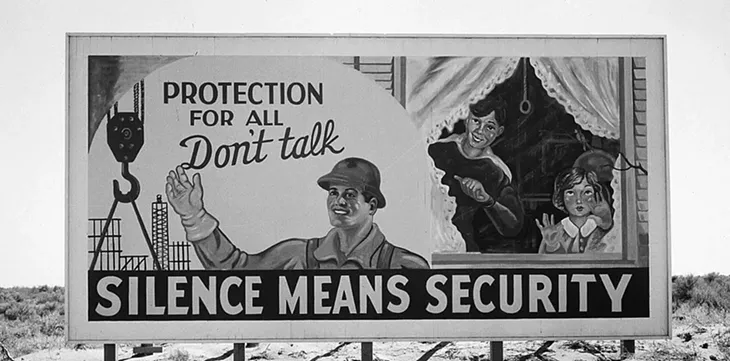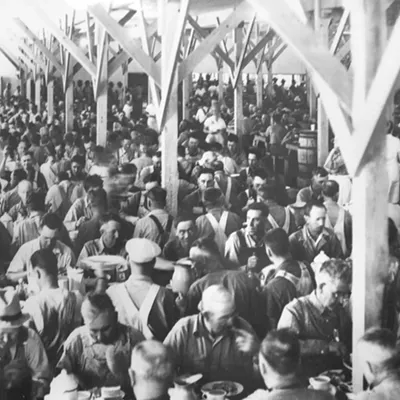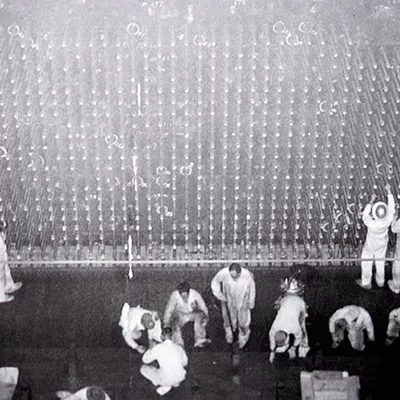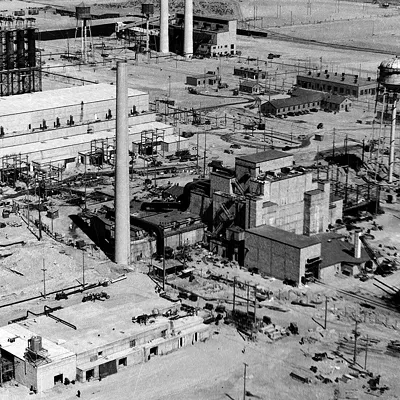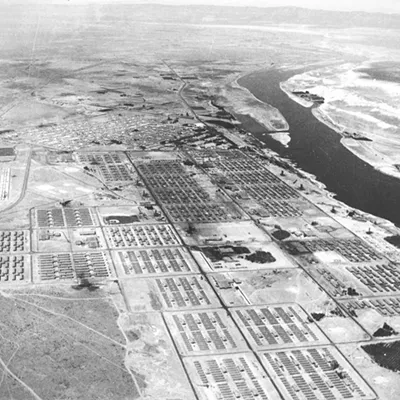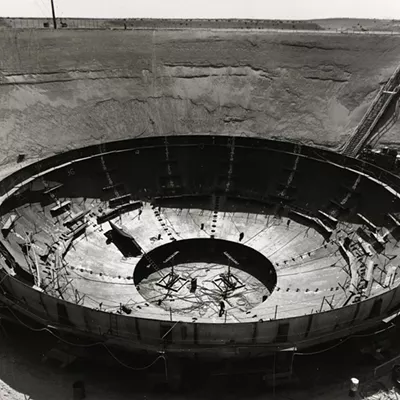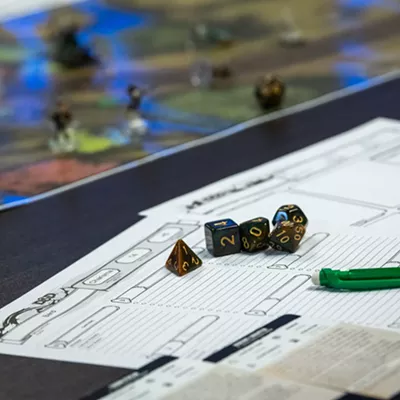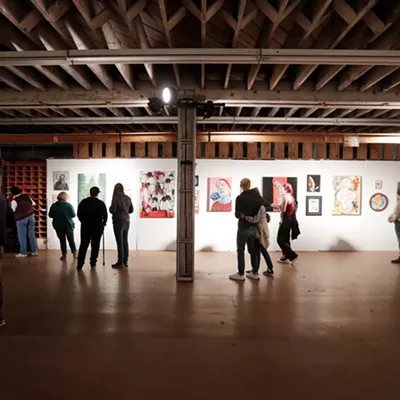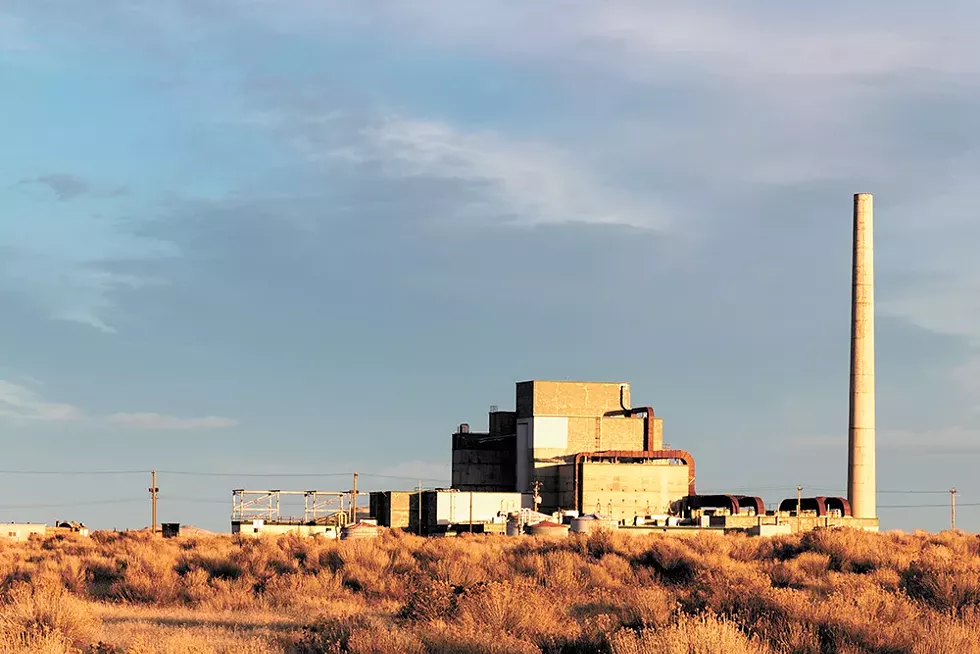
Hanford is a place of profound contrast.
Along the bank of the Columbia River in south-central Washington, an expanse of windswept desert plateau teems with wildlife, despite being designated as the "most contaminated site in the Western Hemisphere." Where Native Americans fished and lived off the land for eons, the U.S. government created the most powerful, dangerous materials humankind has ever known, and the largest environmental disaster the country has ever confronted.
As the birthplace of the world's first full-scale nuclear reactor, Hanford witnessed unprecedented human achievements in science, technology and engineering. That first unit, the B Reactor, was swiftly constructed in just 11 months by a workforce of 51,000. The reactor started up for the first time 75 years ago, in September 1944.
Later, feverish production of weapons-grade plutonium that peaked during the Cold War created an excess of radioactive waste that officials have been trying to clean up for the past 30 years. Many experts believe this process will continue for the next century or longer. Even safely stored, some of the radioactive materials will outlast us for millions of years.
Despite this legacy of waste, Hanford is proudly remembered by many for the role it played in ending World War II, following the devastating bombing of Nagasaki, Japan, on Aug. 9, 1945.
The atomic weapon was loaded with plutonium made inside Hanford's B Reactor and killed an estimated 80,000 people, mostly Japanese civilians. While some may argue that the bomb saved thousands of American and Allied troops' lives by preventing the planned invasion of Japan, Hanford still took a domestic toll.
Several thousand people who lived and worked within the site's nuclear shadow — collectively known as the Hanford downwinders — were sickened from the regular release of radioactive material into the surrounding air and water. Many have since died from diseases caused by these emissions, with no reparations or acknowledgement of their suffering after a decadeslong legal battle.
All that's taken place at Hanford has indisputably changed the course of humanity.
"There is a world before atomic weapons and a world after atomic weapons, and we live in that world, and the B Reactor is the point where that shift happened," says Robert Franklin, a history professor at Washington State University's Tri-Cities campus. Franklin is also the assistant director of the Hanford History Project and president of the nonprofit B Reactor Museum Association.
By reflecting upon the entirety of Hanford's history, Franklin hopes current and future generations can learn from its far-reaching impacts. To start, those interested can visit Hanford itself, where tours of the decommissioned B Reactor offer an up-close look at how the Atomic Age was born. Also, a new exhibit by the Spokane County Library District — on display next month, alongside a series of local events — will explore the complex history and legacy of Hanford.
"However [people] think they might feel about it, come and see the place and give yourself time to reflect both on the achievement it was to build that on such a short time, and to understand the nature of the country in 1942, '43," Franklin says. "And to reflect on the scale of loss that it created and to reflect on a world that was forever changed.
"It's really up there, to me, with Independence Hall, Gettysburg and other places that really share history," he continues. "There is just so much around Hanford. It's a real Pandora's box, the good and the bad that are unleashed."
After a 45-minute drive across the flat, brown shrub-steppe landscape of the Columbia Basin, a bus pulls up outside the boxy, gray concrete structure accentuated by a single towering exhaust stack.
The tour group shuffles off the bus, shading their eyes to peer up at the looming nuclear reactor. A docent in a blue polo shirt instructs everyone to enter and head down the hall for a short presentation. Two neon-colored plaques at the right of the door proclaim "caution" above the universal hazard symbol for ionizing radiation, the fan-like trefoil. "Internally contaminated systems located within. Contact radiological control prior to working on systems."
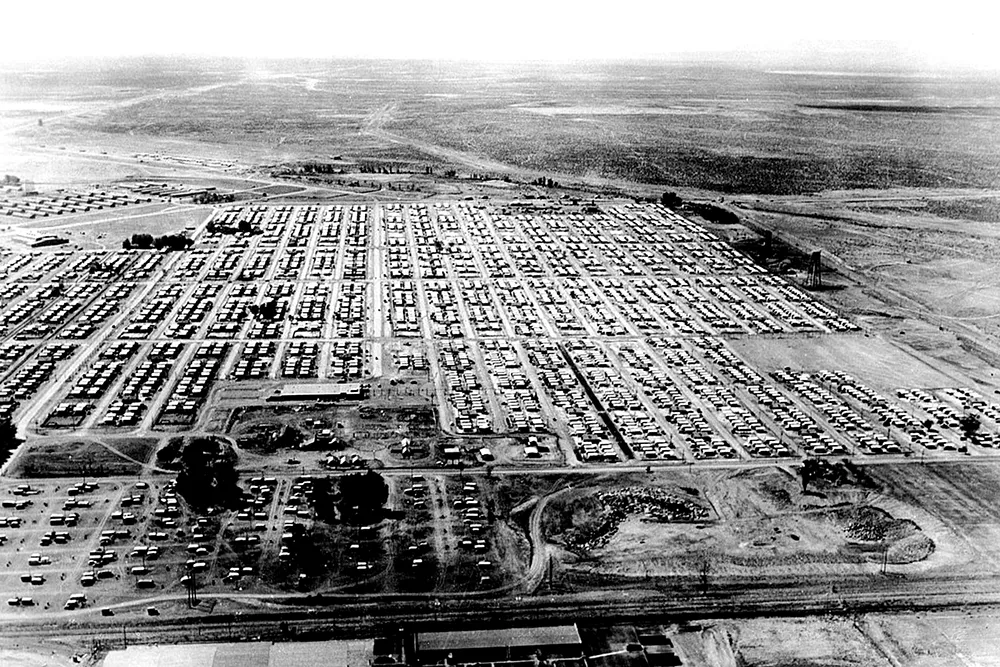
Inside, the familiar, musty aroma of old places permeates the space that's painted in a retro shade of seafoam green. Most of the tourists don't expect the sight that awaits them at the end of the hallway. Several are stunned into silence when they first see it.
Towering three stories high, the "front face" of B Reactor is a massive and intricate assembly of tubes and pipes. Beneath its looming presence, white folding chairs are set up in neat rows for a concert happening later that night titled "Nuclear Dreams."
In the words of Hanford historian Franklin, the cavernous space is "a strange cathedral to nuclear science."
Hanford's B Reactor was rapidly constructed in the heat of World War II as part of the then-top secret Manhattan Project, the U.S. government's mission to create a nuclear weapon before the Nazis could. The newborn science of nuclear fission had only recently been proven (on a much smaller scale) when the massive reactor was designed and construction began in 1943. The U.S. Army Corps of Engineers chose Hanford as the project's home for its relative remoteness, access to plentiful water to cool the reactor, and proximity to a reliable power grid thanks to the newly completed Grand Coulee Dam. With only weeks of notice, about 1,500 farmers, Native Americans, immigrants and other existing residents of the 586-square-mile site were evicted from their homes to clear the way.
"From a science and engineering standpoint, the Manhattan Project was a very high risk, and a very costly venture," notes John Fox, a 92-year-old retired Hanford engineer, former mayor of Richland and longtime B Reactor Museum Association member.
"Everything worked when the chances were against it," Fox continues. "They had a lot of faith in the theoretical physics compared with today's skepticism about climate change and that sort of thing. The practical application was unprecedented."
Now, more than 10,000 visitors each year tour the preserved reactor, a national historic landmark jointly managed by the National Park Service and U.S. Department of Energy. The free tours are offered from April through mid-November.
After marveling at the B Reactor's towering front face and learning how the reactor worked, tour visitors are able to independently wander through most of the facility. They can reflect inside the reactor control room — another seafoam-hued space covered with retro knobs, buttons, dials, wires, charts and meters — along with scientists' offices, worker changing rooms and the cavernous valve pit where water from the Columbia was pumped in to cool the reactor core. A few areas throughout the building, however, are roped off and caution of radiological hazards beyond. Hand-painted vintage signage warning of radiation dangers, encouraging worker safety and stressing the importance of secrecy are everywhere. The midcentury ephemera paired with B's unaltered interior makes it easy for visitors to imagine the bustling efficiency inside the facility at the peak of wartime operations.
Not unlike the Hanford site's past and present, efforts to preserve B Reactor were fraught with challenges from the get-go. Decades after the site's nine total plutonium production reactors were decommissioned, beginning in the mid-1960s, the cleanup plan was to "cocoon" each beneath protective structures. This method prevents radioactive contamination from escaping as the reactor cores inside decay to a state safe enough (a 75-year process) to be dismantled and disposed.
When this plan was announced, a group of former Hanford engineers rallied to save the landmark reactor, founding the B Reactor Museum Association in 1990.
"The objective was always to make it into a museum," recalls Del Ballard, an 89-year-old founding member of the association who first landed a job at Hanford in 1951 as a civil engineer.
"So during our first 10 years, and maybe into the second decade, the primary effort was keeping it from being cocooned like all the other reactors," Ballard continues. "B was put on the end of the list and ultimately preserved. The [Department of Energy] insisted they weren't in the museum business and couldn't convert it, but with 10 to 15 years of effort and public pressure to preserve it, they came around and said if we could find someone else to operate it, we could confirm preservation."
B initially opened for public tours in 2009, which at the time were restricted to adult U.S. citizens, and run by volunteers with the museum association.
"In historic preservation, you lose more battles to save buildings than you win, and to me, the successful saving of a nuclear reactor is a really amazing preservation story," Franklin says. "It's situated within the largest Superfund site in the U.S.; it's a real David and Goliath story, and I was struck by the passion of the people in [B Reactor Museum Association] and how they did that."
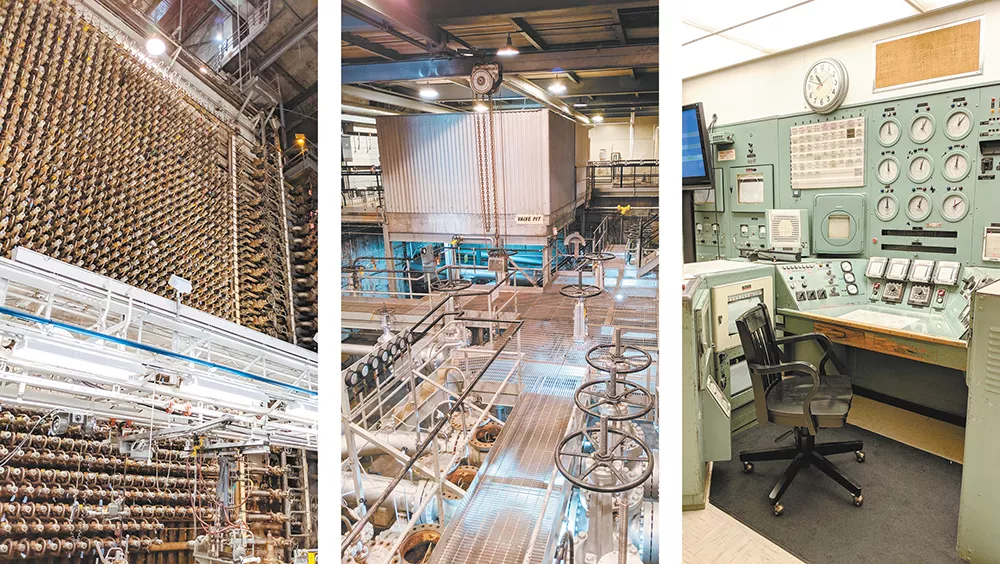
In November 2015, President Barack Obama signed legislation making the reactor part of the newly formed Manhattan Project National Historical Park along with related facilities in Oak Ridge, Tennessee, and Los Alamos, New Mexico. Tours at all three are now open to all ages, and citizenship is not required.
Beyond sharing the favorable stories of Hanford's lasting contributions to nuclear science and its support of the war effort, the National Park Service is continuously working to interpret the site's more destructive impacts on human health, the environment and global peace politics.
"The overarching purpose of the park is to interpret the site and legacy of the Manhattan Project, and we do a great job sharing the science and the triumphant narrative," notes Becky Burghart, Hanford site manager for the Park Service.
"There are also many other stories that the building represents. We used the materials produced in B Reactor in the Trinity Test, the world's first nuclear detonation, as well as in the bomb dropped on Nagasaki, so that piece of history is really important."
During its break from tours this winter, Burghart says the park is installing two new exhibits at the reactor. One highlights the contributions of pioneering health physicist Herbert Parker, who developed the radiological monitoring and safety protocols implemented at Hanford.
"We tried to really bring it down for average visitors who don't know much about the nuclear industry as a way to introduce the story and connect with people," Burghart says. "We have some of the original [radiation] monitoring equipment and Geiger counters, and there are some panels that talk about things like even doing laundry."
The second piece, she says, is tentatively called the "Reflection Room" and is an area set to feature a broad timeline of events beginning with early milestones in nuclear science up through the present.
"We have a couple of interactive panels where we ask visitors to answer questions, so we're not only providing information, but we're also encouraging visitors to create some of their own context, like, 'How does the history matter to them and why? Why create a Manhattan Project National Historical Park?'" Burghart explains.
Hanford downwinders hope their stories, too, will eventually be shared at the park.
Longtime downwinder advocate Trisha Pritikin has struggled with several of her own health issues relating to childhood exposure to radioactive iodine and other harmful emissions released at Hanford, which spread across parts of Eastern Washington, North Idaho, Western Montana and Northern Oregon.
Hanford downwinders, Pritikin says, still haven't been appropriately recognized for their suffering at the expense of the government-owned nuclear site.
Pritikin was born in Richland and lived there for 10 years in the 1950s while both of her parents worked at Hanford. Both parents later died of cancer, and Pritikin's brother died as an infant.
In the early 1990s, she joined a class-action lawsuit with more than 2,000 other downwinder plaintiffs seeking damages, mostly for thyroid diseases or cancer caused by radioactive iodine that Hanford facilities released directly into the air and water, reports of which weren't declassified until 1986. Spokesman-Review reporter Karen Dorn Steele notably was the first to uncover the releases.
The downwinders' legal battle went on for 24 years, until 2015, and ultimately only a handful of plaintiffs received settlements (most were confidential), while many others died of their illnesses during the drawn-out process.
"So basically the downwinders ended up with not much," Pritikin says. "We've lost health, people have died and we're not recognized under the injury compensation laws, not like the workers. We got the short end of the stick: 24 years fighting against these private firms hired by former Hanford contractors to defend them under an indemnity agreement. The government spent $80 million on that."
As she's done for the past 30 years, Pritikin continues to advocate for those harmed by Hanford. She's recently collected the stories of two dozen downwinders into a book releasing in March titled The Hanford Plaintiffs: Voices from the Fight for Atomic Justice.
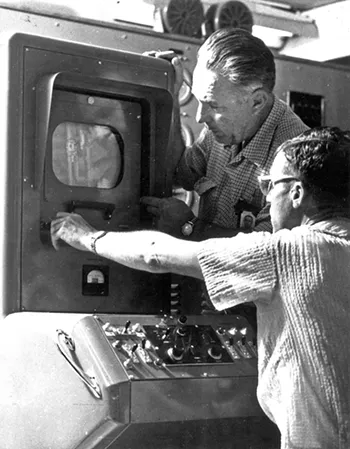
Pritikin also currently serves as board president for the nonprofit Consequences of Radiation Exposure (CORE), which, among other goals, advocates for downwinder recognition in the Hanford narrative.
"We are a part of history and if you leave us out, you're only telling part of the story," Pritikin says. "Again and again, they just ignore us. They don't want to address the health effects, ever. ... They have to change that, and we're going to keep bothering them if they don't."
Hanford's legacy begins at B Reactor and resonates across the region. The Tri-Cities — Richland, Pasco and Kennewick — neighboring Hanford owe decades of population and economic growth to the site. With generations of workers raising their families there, it's also created something of a regional nuclear culture.
This atomic influence is perhaps most visible on the campus of Richland High School, where students continue to embrace the "Bomber" as their mascot, and a logo of a green "R" beneath a mushroom cloud. "Proud of the cloud" is a phrase often declared by students.
Serving as the backdrop of a large campus courtyard is a massive mural of the B-17 Flying Fortress named "Day's Pay," as its 1944 purchase was funded by Hanford employees who rallied to donate a day's wages to support the war effort.
The mascot and mushroom cloud emblem have long been a contentious topic between Richland students, faculty, alumni — both of the school and the Hanford site — and Tri-Cities residents. Hanford's role in local and international history remains a point of pride for many. Others argue the school's imagery is in poor taste to those who lost their lives as a result of the bombing of Nagasaki or in connection to the site's environmental contamination.
"It's very problematic, to put it frankly," Franklin, the historian, says. "But to people here, it tells the story of themselves that they want to be told. They are proud of this connection to ending the war."
Elsewhere in Richland, the Atomic Ale Brewpub & Eatery has gone all in with its nuclear-inspired branding. Opened in 1997, the brewpub's offerings include the Plutonium Porter, Oppenheimer Oatmeal Stout and Half-Life Hefeweizen.
Earlier this year, in recognition of the 75th anniversary of B Reactor going online, the city of Richland hosted a revival of Atomic Frontier Days, an annual community festival that ran from 1948 to 1960. Activities included a parade, historical exhibits, performances and a community dinner recreating a traditional Hanford mess hall meal.
"We brought it back to get the community together, not to celebrate atomic weapons but to celebrate the history of the place," Franklin notes. "Next year is an opportunity to do something different with the 75th anniversary of the end of World War II, and that will be much more contemplative." ♦
HANFORD IN SPOKANE
Residents of the Inland Northwest can further explore Hanford's regionwide legacy at a new exhibit curated by the Spokane County Library District and open through November at the library's North Spokane branch.
The exhibit commemorates B Reactor's 75th anniversary and explores what life at Hanford was like for those who answered recruitment calls to work on the top-secret project.
Additional reading and resources
- Atomic Heritage Foundation, atomicheritage.org
- B Reactor Museum Association, b-reactor.org
- Consequences of Radiation Exposure (CORE), corehanford.org
- Hanford History Project, hanfordhistory.com
"Exhibits like this are so important because our local history seldom just goes away. The echoes of that continue on," says exhibit curator and librarian Corinne Wilson.
"I think it's important when you're looking at an exhibit [about] Hanford to consider what sorts of things the workers there — the scientists and the families who were engaged in the war effort — thought were at stake and what they thought they were defending and working for. And then what sort of consequences came out of that they never would have imagined or intended."
As part of the exhibit, the library is also hosting a series of special programs with various experts on Hanford's impacts. Featured speakers include Trisha Pritikin, a downwinder advocate, and former Spokesman-Review reporter Karen Dorn Steele, who first reported the radioactive emissions at Hanford and the downwinders' plight.
Spokane author Sharma Shields, whose 2019 novel The Cassandra was inspired by Hanford history, also presents, along with former Washington state poet laureate Kathleen Flenniken, whose poetry collection Plume was inspired by the nuclear reservation.
"I hope that people think about Hanford from at least one more perspective than they did before," Wilson notes. "We've really tried to strike a balance between being fair to what people knew at the time and what their fears were, but also not glossing over some of the really negative and long-lasting impacts of those decisions."
— CHEY SCOTT
Exhibit: The Hanford Site • Nov. 1-30; open Mon-Thu 10 am-9 pm; Fri-Sat 10 am-6 pm; Sun 1-5 pm • North Spokane Library • 44 E. Hawthorne Rd. • scld.org • 893-8350
HANFORD EXHIBIT EVENTS
Ecology of Hanford
Washington State University professor Richard Zack talks about his ecological work studying insects at the Hanford site. Sun, Nov. 3 at 2 pm (North Spokane Library); Tue, Nov. 12 at 6:30 pm (Moran Prairie Library)
Hanford-Inspired Literature & Journalism
Spokane author Sharma Shields reads from her Hanford-inspired novel The Cassandra. Journalist Karen Dorn Steele discusses her coverage for the Spokesman-Review of widespread Hanford radiation emissions and other investigations on pollution and spending at Hanford. Tue, Nov. 5 at 6 pm (Moran Prairie Library); Thu, Nov. 14 at 6:30 pm (Spokane Valley Library)
Reading Hanford: Poetry & Prose
Author Sharma Shields and investigative journalist Karen Dorn Steele read from their published work. Poet Kathleen Flenniken shares poems inspired by Hanford and her hometown of Richland, and downwinder activist Trisha Pritikin discusses her family connection to Hanford and her upcoming book with Steele. Sat, Nov. 9 at 2 pm (North Spokane Library)
Tour the B Reactor
For information and to register for public tours of the B Reactor, offered April through mid-November, visit manhattanprojectbreactor.hanford.gov.
ABOUT THE AUTHOR
Chey Scott has been on staff at the Inlander since 2012. Some of her recent and varied arts and culture coverage includes a look into the revival of Dungeons & Dragons, the real cost of wasted food, edible flowers, vintage fashion and women in the culinary industry. She can be reached at cheys@inlander.com.

